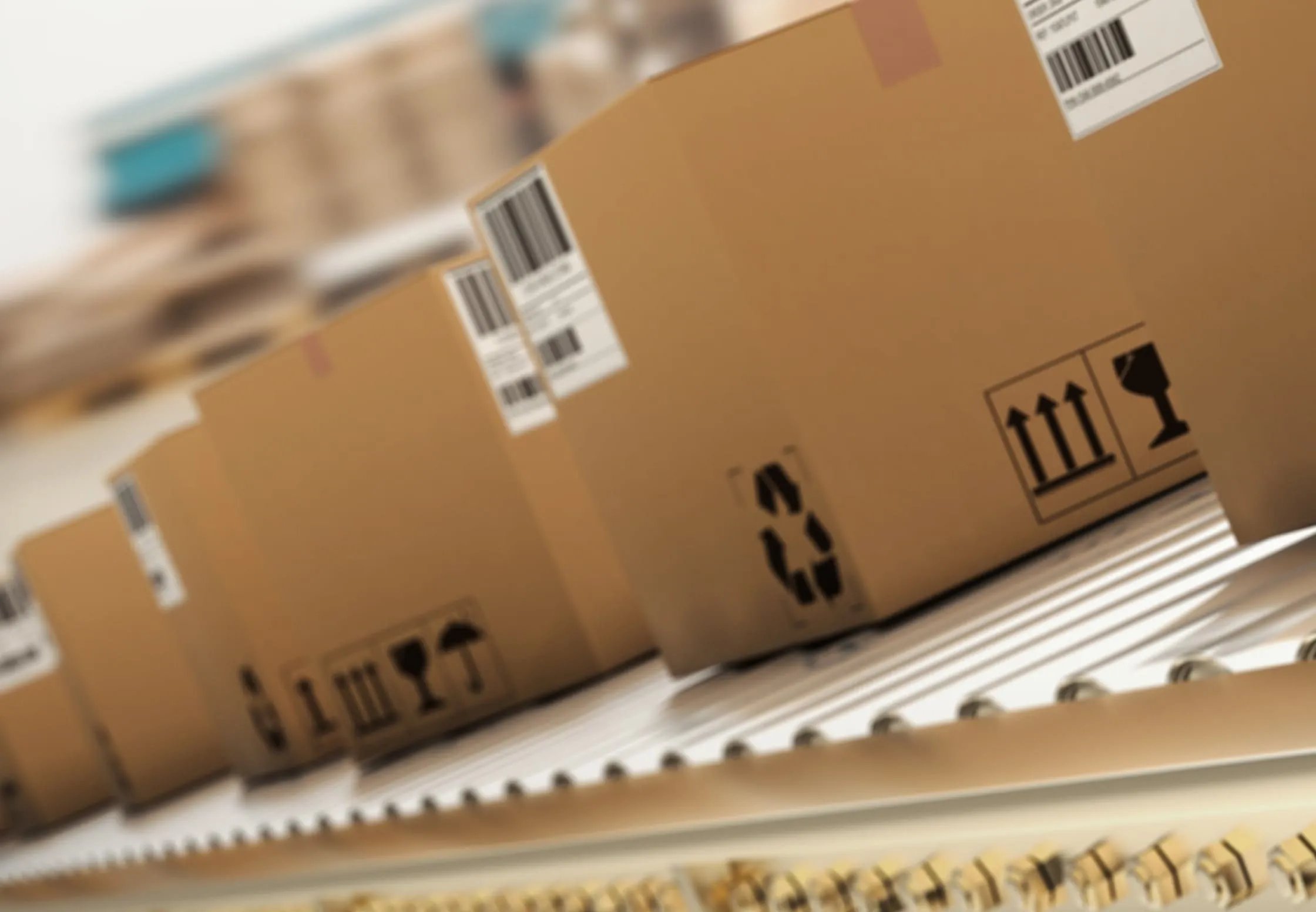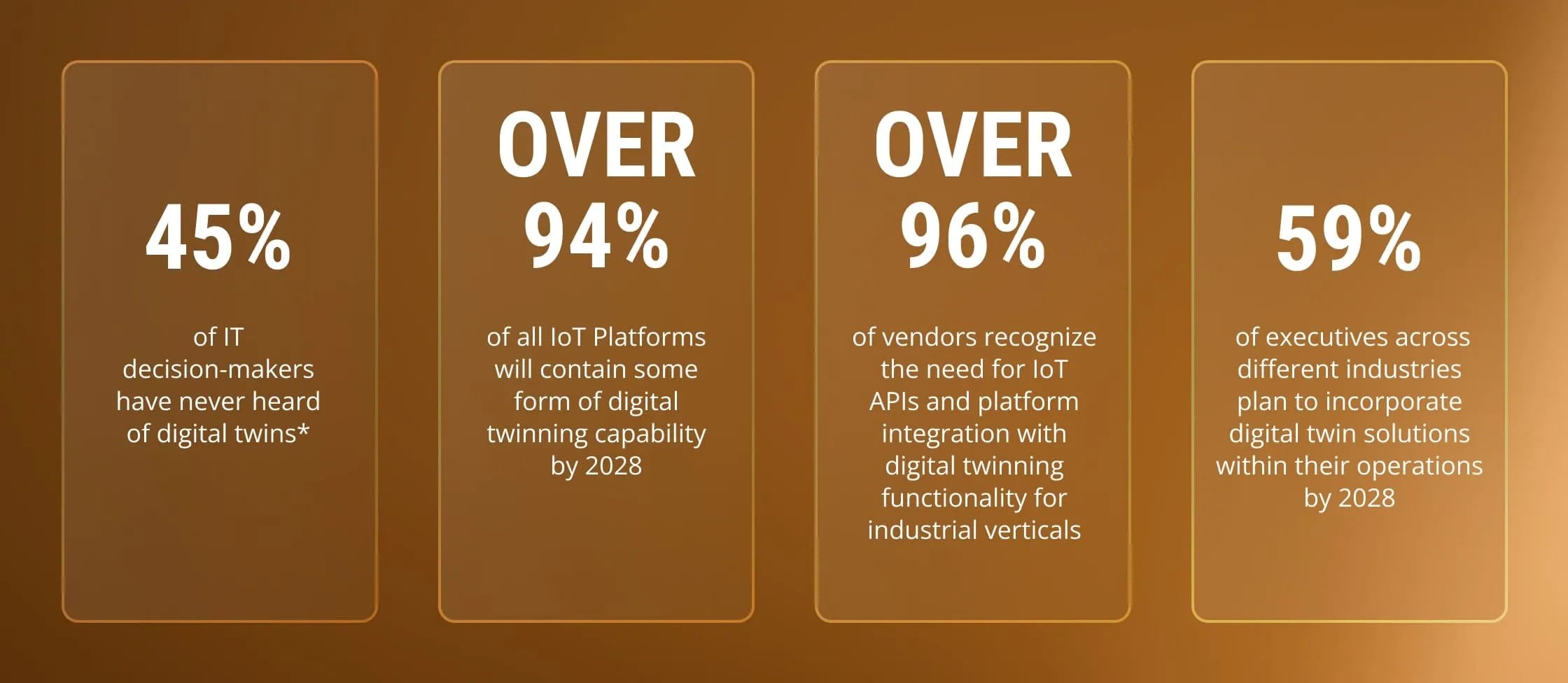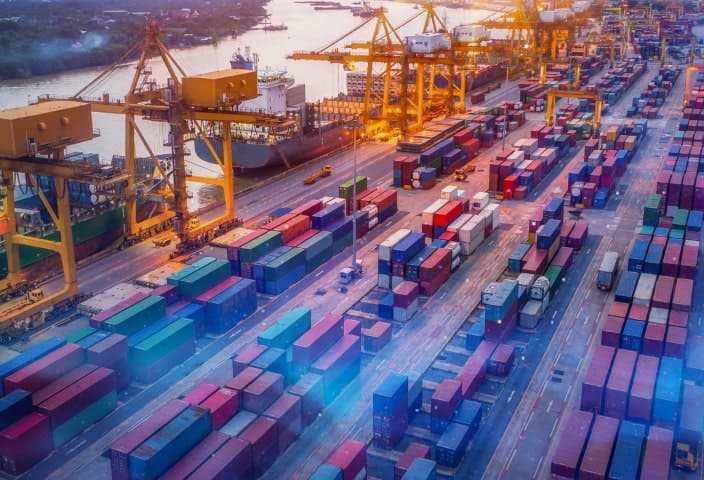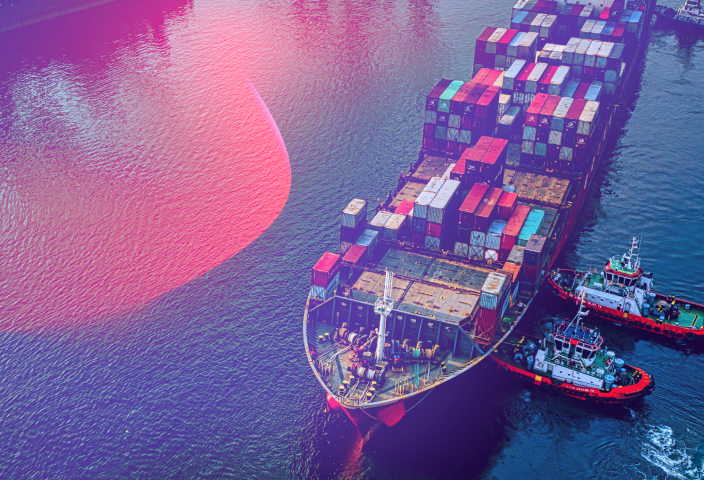With new technologies available, businesses can now rely on digital tools that significantly improve decision-making, automate it, and ensure that it focuses on the desired outcome. In this article, we will look at how digital twins improve supply chain processes and add value to the entire organization.
How Does Digital Twin Improve Decision-Making in the Supply Chain?
Whether a large cargo delivery or a small package from an online marketplace, supply chain planning is essential to logistics. In the past, people settled for the ad hoc nature of transport to and from ports and relied on delivery routes depicted on paper maps. Consequently, it was difficult to definitively answer many supply chain questions, such as, “Do we have the proper inventory capacity and capabilities to meet demand?”, or “How much are we planning to sell, and does this match our goals?”
Nowadays, companies often ask themselves a more focused question: “How is it possible to break down data silos and intelligently use information from the entire supply chain?” In this article, we’ll discuss a digital solution designed to help better understand, predict, and sustainably optimize all processes in the supply chain.
What Puts Logistics Industry Under Pressure?
Blaming the pandemic for the current supply bottlenecks would be as simple as it is wrong. Even before that, factory closures, labor disputes, and geopolitical conflicts paralyzed logistics centers and brought shipping companies to a standstill. The "just-in-time" model that has been used for decades only works if the framework conditions are intact, which is far from the case.
There is also a technical reason for the ongoing problems in the supply chain: the reliance on legacy IT systems and manual processes to transfer goods from the farm or factory to their final destination. Many of today's most complex supply chains still work with spreadsheets, emails, and whiteboards.
The comprehensive digitization of tomorrow's logistics is not an end in itself. However, given increasing challenges in sustainability, rising transport costs, and trade policy uncertainties, companies are relying more on digitization to remain competitive and able to deliver in the world of tomorrow. Transparency based on a large amount of data is a decisive factor in enabling holistic optimization along the supply chain and leveraging additional efficiency potential. As an interface between the physical and virtual world, the "Digital Supply Chain Twin" promises a smart solution.

What Is a Digital Twin?
A digital twin in a supply chain refers to a virtual replica or representation of a physical supply chain system or process. It utilizes real-time data and digital technologies to create a digital counterpart that mirrors its physical counterpart's behavior, characteristics, and performance.
The concept of a digital twin originated in engineering and was later applied to various industries, including supply chain management. In the context of supply chains, a digital twin provides a comprehensive and dynamic view of the entire supply chain network, including all its interconnected components, such as suppliers, manufacturers, warehouses, transportation systems, and distribution channels.
It is simply a matter of connecting a real object and its digital counterpart in virtual space to transmit the virtual object in real time. Data sensors and other data providers can provide the most comprehensive picture of the status quo and ultimately produce a digital twin.
Worldwide Adoption and Features
The Internet of Things has greatly boosted digital twin technology. According to a Gartner survey, 62 percent of companies implementing IoT projects plan to use digital twins. Supply chains, in particular, represent an attractive use case for digital twins.
Of course, technology alone will not solve the current disruptions. Still, there are signs that the AI-powered digital twin could mitigate major bottlenecks by making them more predictable — and that would take crisis preparedness to a new level.
 *Research and Markets Study, March 2023
*Research and Markets Study, March 2023
Key Features of a Digital Twin in a Supply Chain
-
Data integration
A digital twin integrates data from various sources across the supply chain, including IoT sensors, enterprise systems, and other relevant data points. Therefore, service providers receive a real-time representation of the supply chain.
-
Simulation and modeling
Digital twins enable the simulation and modeling of different scenarios and "what-if" analyses. Supply chain managers can use the digital twin to assess the impact of changes or disruptions in the supply chain and make informed decisions.
-
Performance monitoring
By capturing and analyzing real-time data, a digital twin helps monitor the performance of the supply chain. It can identify bottlenecks, inefficiencies, and potential risks, allowing for proactive measures to optimize operations and mitigate disruptions.
-
Predictive analytics
A digital twin can provide predictive insights into future supply chain performance by leveraging historical data and machine learning algorithms. This capability assists in forecasting demand, optimizing inventory levels, and enhancing overall supply chain resilience.
-
Collaboration and visibility
A digital twin facilitates collaboration among supply chain stakeholders by providing a shared platform for real-time visibility and information sharing. It enables better coordination and communication across different entities, improving efficiency and responsiveness.
Examples of Digital Twin Integration in the Logistics Process
The more accurate the software simulation of the physical world, the better the digital twin works as a “what-if '' planner that can be used to test the supply chain’s resilience in a crisis. For example, what is the impact of the temporary outage of a distribution center damaged by a flood? What are the consequences of a pandemic-related border closure for a specific delivery route? Here are examples of how digital twins provide simulations of possible alternative actions and thus optimize the logistics process.
1. Warehouse Optimization
By creating a digital twin of a warehouse, logistics companies can monitor and optimize various aspects of their operations. The digital twin integrates real-time data from sensors, Internet of Things (IoT) devices, and other sources to visually represent the physical warehouse. This integration allows companies to simulate and analyze different scenarios, such as optimized layout, storage capacity, and material flow. Benefits include improved inventory management, reduced operational costs, and enhanced resource utilization.
2. Predictive Maintenance
Digital twin integration enables predictive maintenance in logistics, particularly for equipment and vehicles. By connecting sensors and monitoring systems to the digital twin, logistics companies can collect real-time data on various parameters such as temperature, vibration, and performance metrics. This data is then analyzed using machine learning algorithms to detect patterns and anomalies, allowing for proactive maintenance. Predictive maintenance helps reduce unexpected breakdowns, minimize downtime, optimize maintenance schedules, and extend the lifespan of assets, ultimately improving operational reliability and reducing costs.
3. Supply Chain Optimization
Digital twin integration can be applied to optimize the entire supply chain, from production to delivery. By creating a digital representation of the end-to-end supply chain, logistics companies can simulate and analyze different scenarios to identify bottlenecks, optimize processes, and enhance overall efficiency. The digital twin can integrate data from various sources, including suppliers, manufacturing facilities, transportation systems, and customer demand. Benefits include improved demand forecasting, enhanced inventory management, optimized transportation routes, reduced lead times, and increased customer satisfaction.
These examples demonstrate how digital twin integration in logistics can bring practical benefits by enabling better decision-making, improved resource utilization, and optimized operations throughout the supply chain.
The Bridge Between the Physical and Digital Worlds
As a digital representation of an actual physical product, digital twins support the connection of this product to existing PLM, ERP, SCM, and other software systems and, thus, the integration of operational technology and enterprise IT. Companies using such powerful digital twins develop reliable IoT solutions faster and achieve a better ROI.
Despite the above benefits, the digital supply chain twin is still in its infancy and has a long way to go to meet the standards of Supply Chain 4.0. For it to develop to its full potential, different technologies from AI to the Internet of Things must work together — and data flow must be ceaseless, including sales and inventory amounts and forecasts, transport orders, confirmation and invoicing, various types of contracts, and delivery terms.
Conclusion
Overall, a supply chain's digital twin is a powerful tool for enhancing operational efficiency, agility, and decision-making capabilities. It enables supply chain managers to gain deeper insights, optimize processes, and respond effectively to changing market dynamics and disruptions.
Modern standard software that can establish the connection between source and target systems with just a few clicks makes it possible to leverage the potential of using the digital twin. LeverX has extensive experience in cyber-to-physical integration. Let us help you use new digital models for your company!
How useful was this article?
Thanks for your feedback!
-min-Jul-12-2022-02-37-35-21-PM.jpg)

.jpg)
